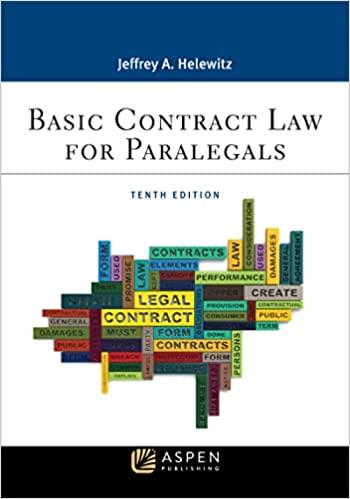Question
In 2016, U.S. Supreme Court Justice Samuel Alito said the following about the concreteness element: A concrete injury must be de facto; that is, it
In 2016, U.S. Supreme Court Justice Samuel Alito said the following about the concreteness element:
A "concrete" injury must be "de facto"; that is, it must actually exist. . . . When we have used the adjective "concrete," we have meant to convey the usual meaning of the term"real," and not "abstract." . . . "Concrete" is not, however, necessarily synonymous with "tangible." Although tangible injuries are perhaps easier to recognize, we have confirmed in many of our previous cases that intangible injuries can nevertheless be concrete. Identify a plausible injury that a person could suffer and, based on our discussions in class, the reading assigned last week, Justice Alito's quote, and your own life experiences, explain why you think that injury should meet the concreteness element and, separately, provide a counter-argument as to why that same injury should fail to satisfy the concreteness element.
Injury: Explanation as to why the injury satisfies the concreteness element: Explanation as to why the injury does not satisfy the concreteness element:
Step by Step Solution
There are 3 Steps involved in it
Step: 1

Get Instant Access to Expert-Tailored Solutions
See step-by-step solutions with expert insights and AI powered tools for academic success
Step: 2

Step: 3

Ace Your Homework with AI
Get the answers you need in no time with our AI-driven, step-by-step assistance
Get Started


